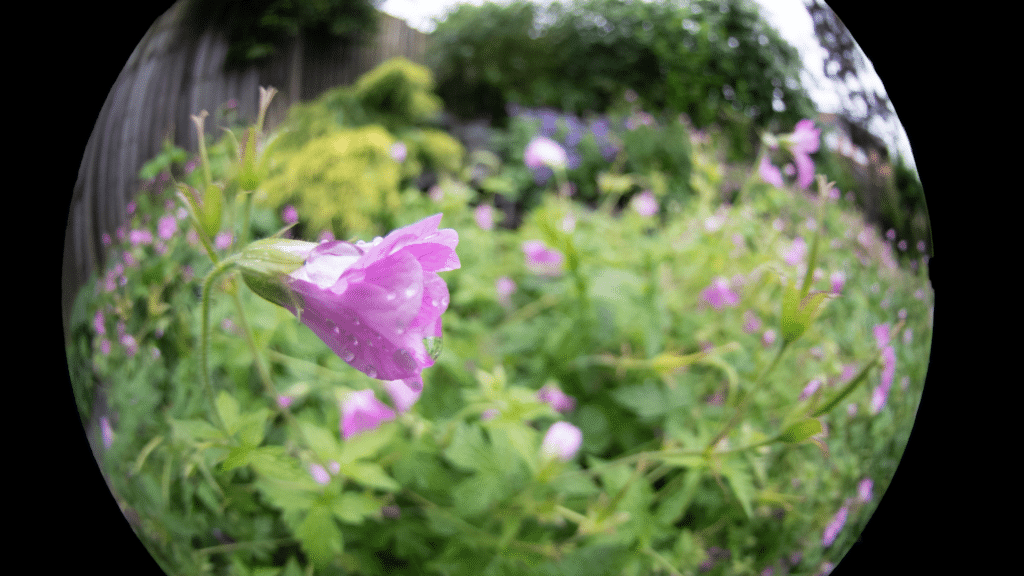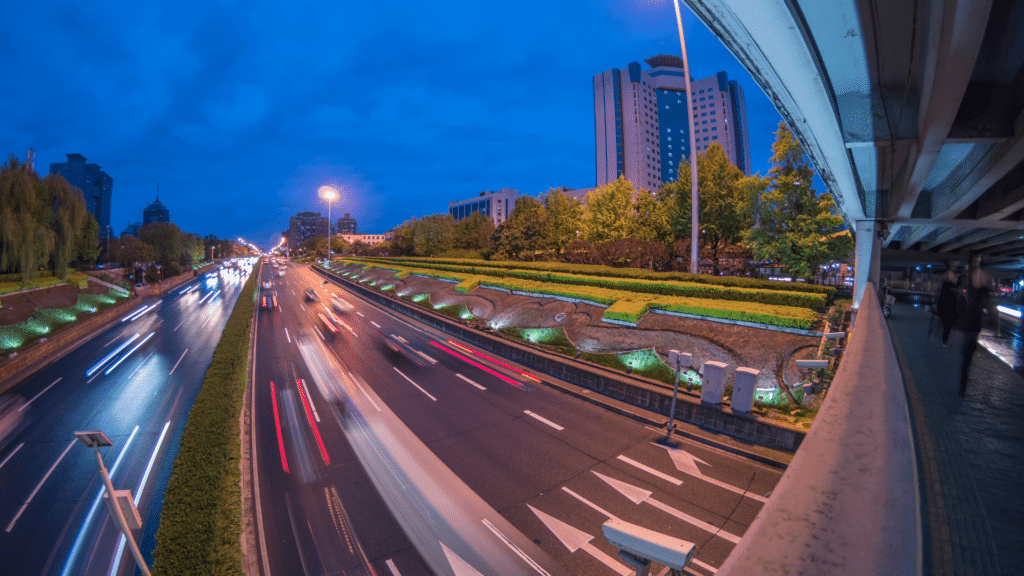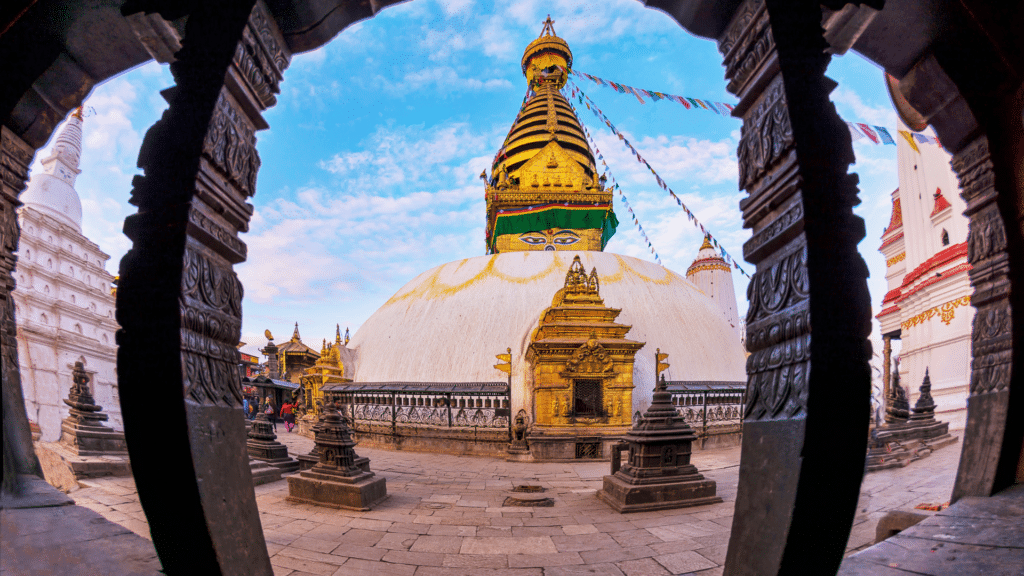What is a fisheye lens?
Article and Video by Colette Nichol, Solo Filmmaker and Story Strategist
A fisheye lens is a type of ultra wide-angle lens that creates a distinct visual distortion intended to create a wide panoramic or hemispherical image.
Named for the way a fish might see the world from under the water, these lenses achieve extremely wide angles of view by forgoing producing images with straight lines of perspective (rectilinear images), opting instead for a special mapping, which gives images a characteristic convex non-rectilinear appearance.
Video Example:
Fisheye lenses are available in two main types:
Circular fisheye lenses
These lenses capture a full 180 degree view in all directions, and display the image as a circle within the camera’s field. The image is circular because the angle of view and the image projection of the lens is circular.

Full-frame fisheye lenses
These lenses also capture a 180 degree view, but only diagonally.
The image covers the whole frame, and while the distortion is still there, it’s spread out a bit more evenly across the image.
The distinctive look of fisheye lenses can be used creatively, particularly in landscape, extreme sport, and artistic photography. The lens is also popular in scientific and meteorological fields where the wide field of view is required. It’s important to note that the distinctive fisheye look—particularly the edge distortion—can be a challenge to work with, and not every scene or subject will benefit from this type of perspective.
You’ve probably seen a fisheye used in films when a character is looking through the peephole in the door as this has been done frequently.

Video Example:
Missy is being filmed with a fisheye lens when she’s in the garbage bag.
What are fish eye lenses good for?
Fish eye lenses are primarily used for creating wide panoramic or hemispherical images.
Due to their unique distortion, they can capture a 180-degree view, which makes them ideal for shooting landscapes, skyscrapers, and other broad vistas. Fish eye lenses are also popular in action photography, astronomy, and for creating artistic shots with a surreal perspective.
What is a fisheye lens vs regular lens?
A fisheye lens is a type of ultra-wide angle lens that is designed to capture an extremely wide image, typically around 180 degrees.
They are called ‘fisheye’ because they mimic the way a fish would see an underwater scene, with a wide view that distorts the edges of the image to fit into a circular frame. This results in a distinctive spherical, ‘bubbly’ image.

A regular lens, also known as a rectilinear lens, captures images similar to how the human eye sees the world. The images produced have straight lines that appear straight, rather than curved. Regular lenses come in a variety of types including wide-angle, standard, and telephoto, each offering a different field of view and level of magnification.
For example, a picture taken of a tall building with a fisheye lens would show the building curving away, making it look spherical or distorted. The same picture taken with a regular lens would show the building as you usually see it, with straight lines and undistorted proportions.
What are the disadvantages of a fisheye lens?
While fisheye lenses can produce unique and striking images, they also come with a few disadvantages.
Distortion
This is the main disadvantage of a fisheye lens. The distinctive ‘bubbly’ effect can be artistically interesting, but it can also distort subjects in a way that’s undesirable for certain types of photography, such as portraiture or any image where realistic proportions are important.
Difficulty in composing shots
Due to their ultra-wide field of view, it can be challenging to compose shots that don’t include unwanted elements. For instance, the photographer’s own shadow or reflection may unintentionally appear in the shot.

Vignetting
This is when the corners of an image are darker than the center. Fisheye lenses often produce images with significant vignetting.
Price
Fisheye lenses tend to be more expensive than standard lenses, which could be a disadvantage for amateur photographers or those on a budget.
More Filmmaking Articles:
- What is a pancake lens?
- What is a macro lens?
- The Best Lens For Video Hands Down
- How to Start Filmmaking Even If You’re a Beginner
Learn Filmmaking and Get the Gear Guide
If you’re interested in learning filmmaking, check out the Solo Filmmaking Mentorship Program I created for aspiring filmmakers and video creators. It usually goes live once per year. So I recommend getting the Story Envelope Filmmaking letter which comes out a couple of times per month. That way, you can get filmmaking tips for free and find out when the filmmaking course is going live again.
Also, before you go, grab the Solo Filmmaking Gear Guide and Checklist for Beginners.

About the Author
Hi! I’m Colette Nichol. I’m a solo filmmaker and story strategist based out of rainy Vancouver, Canada. I’ve been making videos and micro films for small businesses and global brands since 2014.
Plus, I LOVE to help aspiring filmmakers pursue their dreams and start making films. This blog is designed to help you gain the knowledge you need to become a filmmaker.
If you want more, get on the waitlist for the Story Envelope Academy Solo Filmmaking Mentorship Program. It opens up one time per year and is the best way to become a filmmaking or video pro fast!
CLICK HERE to get on the solo filmmaking mentorship waitlist.